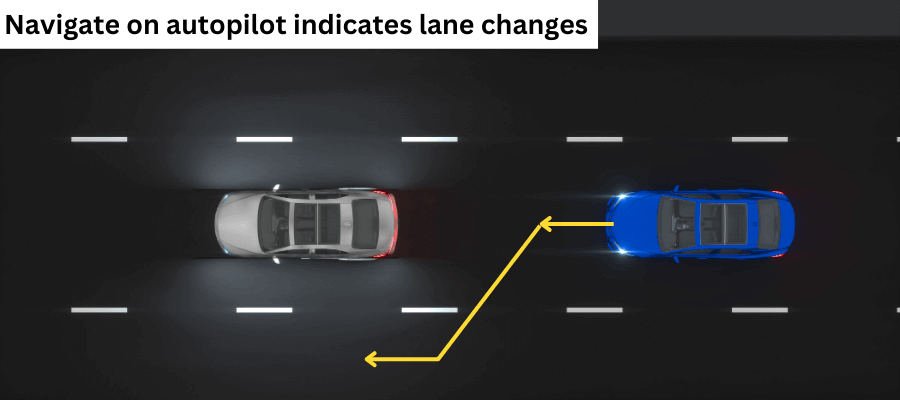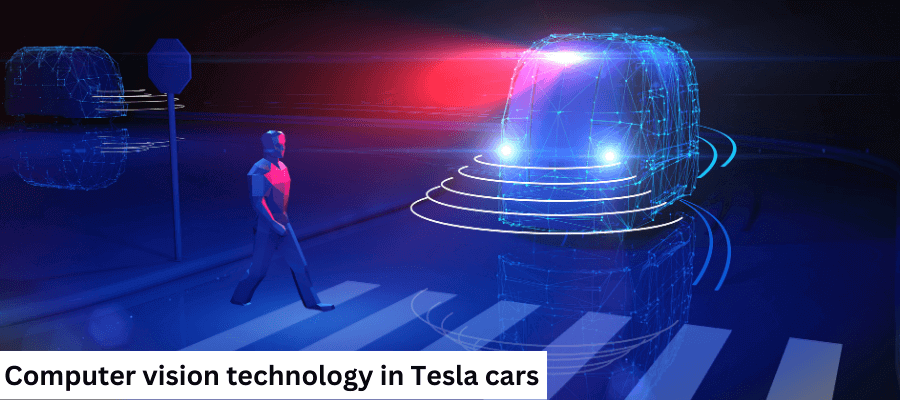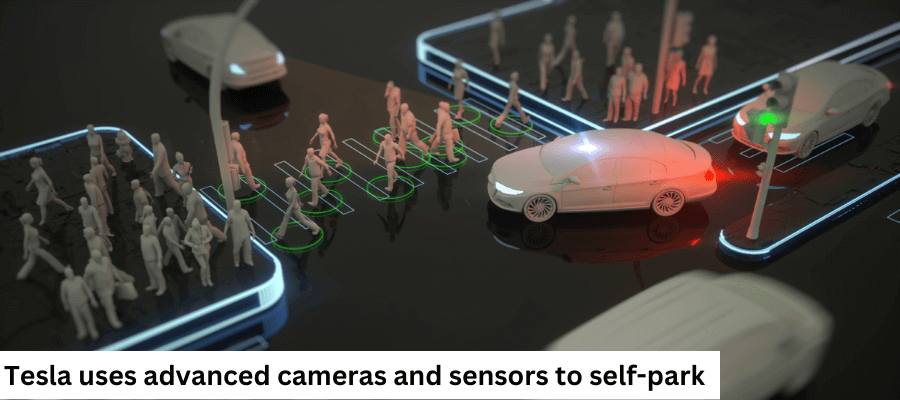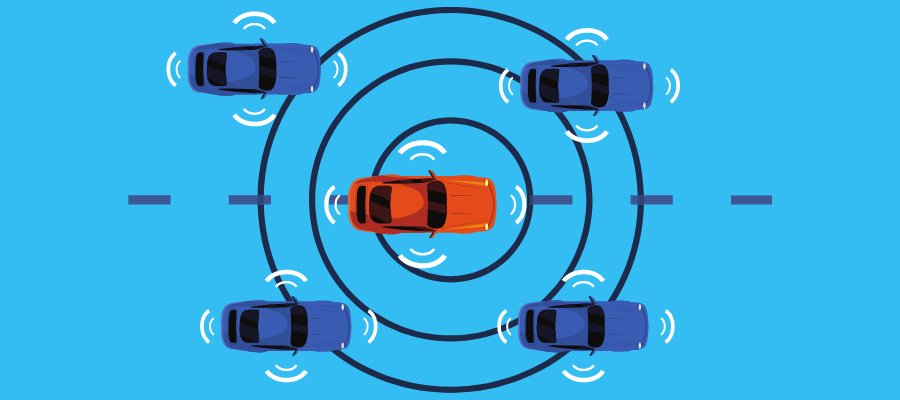Tesla is one of the well-known names in the automobile industry when we think of cars. But they’re actually a technology company built with the bricks of Artificial Intelligence technology.
Elon Musk’s Tesla INC, a California-based electric vehicle and clean energy firm established in 2003, has a market cap of over $700 billion, making it more valuable than the combined value of the top seven automakers.
Tesla’s electric automobiles are the most well-known products today. Making their cars fully automatic is one of Tesla’s primary objectives, and they are using big data and AI to achieve this.
In this article, we will learn about AI technologies that are used by Tesla to make electric automobiles and other sustainable energy generation and storage solutions.
📌 Table of Contents
How Tesla uses AI
Tesla is a well-known automobile firm that uses Artificial Intelligence (AI) to develop and deploy autonomy on a scale in vehicles, robots, and more. Tesla mainly employs Computer Vision (CV), neural networks, AI, and machine learning to create advanced and futuristic robots and machines.
“We believe in an approach supported by advanced AI for our vision and strategy” – Elon Musk.
The crux of Tesla’s operating system is its features such as autopilot, FSD, dual chips, and optimization in design. Let us take a look.
1. Autopilot

The autopilot feature encourages driver safety and assists you with the onerous parts of driving, According to Tesla. It facilitates the car to steer, change lanes, increase and decrease speed, and brake automatically.
1. Navigate on autopilot
The Navigate on autopilot indicates lane changes that assist in optimizing your route and help you to make quick adjustments in order to beat slow traffic. When activated, it will automatically steer your automobile toward freeway intersections according to your destination.

2. Autosteer
The latest EV model includes 8 external cameras, 12 ultrasonic sensors, and a dynamic onboard computer. Autopilot counts on these cameras and sensors to help you navigate through narrow and convoluted roads.
3. Smart Summon
Smart Summon helps your vehicle to study complex environments and parking spaces, steer around objects, and find parking spots.
4. Cruise Control
To maintain a safe distance from oncoming traffic, the Tesla’s speed is adjusted using radar and cameras looking forward. This function keeps a secure space between the vehicle and the one in front of it. The spacing between the two vehicles is influenced by their respective speeds.
The Tesla will track any vehicles that try to merge into your lane and slow down if required. If a vehicle merges into your lane and accelerates, the Tesla won’t freak out and slam on the brakes.

2. FSD
The key feature of Tesla cars is that it is ‘Fully Self-Driven’ (FSD). All the latest Tesla models include the hardware required in the future for full self-driving in relatively all cases. It is designed to cover short as well as long-distance journeys and requires no operation by the person sitting in the driver’s seat. Here’s how it works:
1. Starting from your house
All you have to do is get in your car and tell it where you want to go. If you don’t say anything, it will go through your calendar and take you there, assuming your destination. Your automobile will design an excellent route, navigating through all kinds of reads, junctions, and highways.
2. To your desired destination
Once you reach your destination, just get out of your car. After you get out, your car will automatically look for a parking spot and park itself. And with just one tap, you can summon it back to you.
3. Dual AI Chip System
Tesla’s operating system includes 2 AI chips that facilitate road safety and overall performance.
It simply aspires to be unassailable, such that if there is any single unit malfunction, its power backup and data input helps the car continue to function using its spare resources.
This makes it so well equipped that it helps to prevent accidents and maintains road safety.
4. Design Optimization
The AI chips are designed in such a way that it is optimized to function at about 2 GHz and perform at a pace of more than 35 trillion operations per second.
It obtains such a high level of performance by keeping generic functions in the background and keeping its focus on the important tasks.
Along with the current features, Tesla continues to work on more tools and projects in the future.
5. Computer vision
Object detection is one of the important jobs in computer vision. Objects such as Deer or houses rarely appear on the road.
When a Tesla encounters what the neural network believes to be an animal (or perhaps just an unidentified object obstructing a patch of the road), the cameras capture a picture, which is later uploaded via wifi.

The ability to find numerous examples of rare items is made possible by the billions of miles that vehicles travel annually. It makes absolute sense that over time, Teslas will surpass Waymo vehicles at identifying rare objects.
6. Autosteer
The Tesla can change lanes, maintain center-of-gravity, and self-park with the help of the autosteer feature.
The sensors in the Tesla monitor other vehicles on the road to maintain safe distance from the Tesla while the cameras around the car follow the location of road markers to keep it centered.
The driver must manually activate the turn signal on the Tesla before the sensors can stop it from merging into other vehicles.
The car uses cameras and sensors to self-park in parallel and perpendicular directions without running into anything.

When the road markings are not clear and/or the automobile is moving at a speed below 20 Mph, the autopilot feature does not function effectively. It is not advised to use this feature in residential areas with street lights and stop signs.The driver must continue to pay attention and maintain their grip on the steering wheel.
The car will advise the driver to take control if it cannot detect the driver’s hands. If the driver continues to not take the wheel, the vehicle will begin to slowly and safely slow down until the driver takes the wheel or the vehicle comes to a complete stop.
The Tesla can only assist drivers, it is unable to operate completely on its own. However, a newer feature in the Tesla has the ability to enter and exit parking spots without the presence of a driver.
This feature comes in handy when there is no space between your parked car and the other vehicle/wall/bush next to your car, making it difficult to enter/exit your car after parked.
📌 Relevant read: Artificial intelligence branches and its career opportunities
Future of AI applications at Tesla
Tesla aims to generate, integrate and scale autonomy in its vehicles, robots, and other projects.
It promotes an approach with enhanced AI backed up with efficient hardware and software as its foundation and believes it to be the optimal solution for complete self-driving and more.
Here are some of the AI applications that Tesla aims to integrate in the near future:
1. The Dojo Chip and System
It intends to develop and design the Dojo System. It seeks to find solutions to difficult problems with the help of its cutting-edge technology for major-league cooling and delivery and produces control loops and software monitoring which scales.
It also aims to develop AI training chips to support the Dojo system. It aims to implement its forefront technology from the tiniest training nodes to multi-tie design tiles.
It also aims to bring about superlative performance at granular levels.
📌 Further resources on AI:
2. Algorithms or autonomy
It aims to advance core algorithms that drive the vehicle by creating a high-definition representation of the surrounding environment.
For training neural networks to foresee such representations, it aims to create meticulous and large-scale real-time data algorithmically by studying the information received through the vehicle’s sensors.
3. Neural Networks
One of its other objectives is to apply its contemporary analysis and study to enhance deep neural networks on obstacles varying from perception to control.
Its per-camera networks study raw images to execute semantic distribution, detection of objects in the surroundings, and in-depth assessments.
Its panoramic view cameras take videos from all cameras to present a road layout, immovable infrastructure, and 3D objects starting from a top-down perspective.
4. Evaluation of Infrastructure
It aims to develop open and closed-loop evaluation devices and infrastructure to enhance and stimulate innovation, keep a track of improvements in performance, and prevent malfunctions or relapses.
It also intends to write codes that replicate the real-world environment, which helps to create and design highly authentic and lifelike graphics and other sensor information that feeds the Autopilot operating system.
5. Tesla robots
Recently, Tesla presented its prototype humanoid ‘Optimus’, aiming to create more advanced and revised versions of such robots that seek to replace heavy-lifting physical work.
It further intends to produce the next era of automation which includes a purpose and capability of performing tasks that are redundant, monotonous, and dangerous.
📌 Looking for AI companies? Here is a list of top artificial intelligence companies based in Chennai
Final Words
Tesla has been notorious as one of the fastest-growing firms that use data analysis and AI as its core strengths.AI and big data will continue to be steadfast partners for Elon Musk and his team at Tesla as they move on with their newest initiatives.
From creating its own chips to make completely automated and environment-friendly vehicles, one can envision it as a revolutionary in the technology industry.

Samruddhi Chaporkar is a Technical Content Writer of science and technology with a academic qualification in Bachelor’s in Computer Applications (BCA). Her love for writing and knowledge of computer science helps her write about trends in the technology industry that help people understand the ins and outs of the world of technology.

